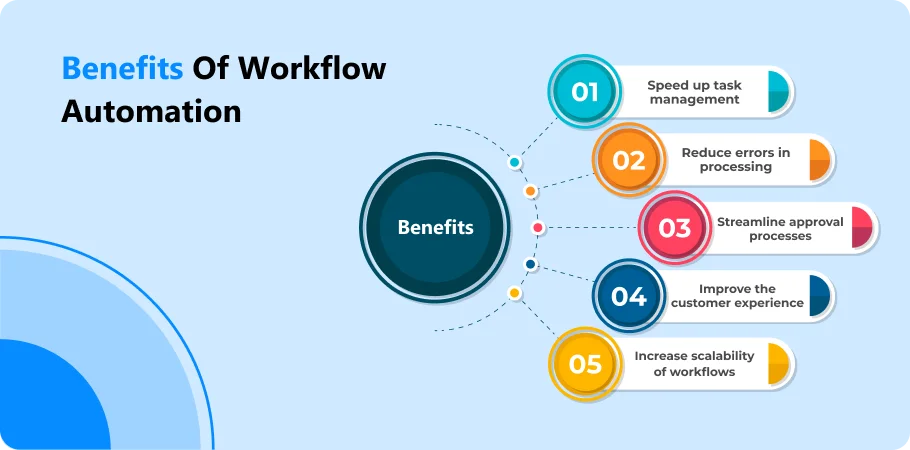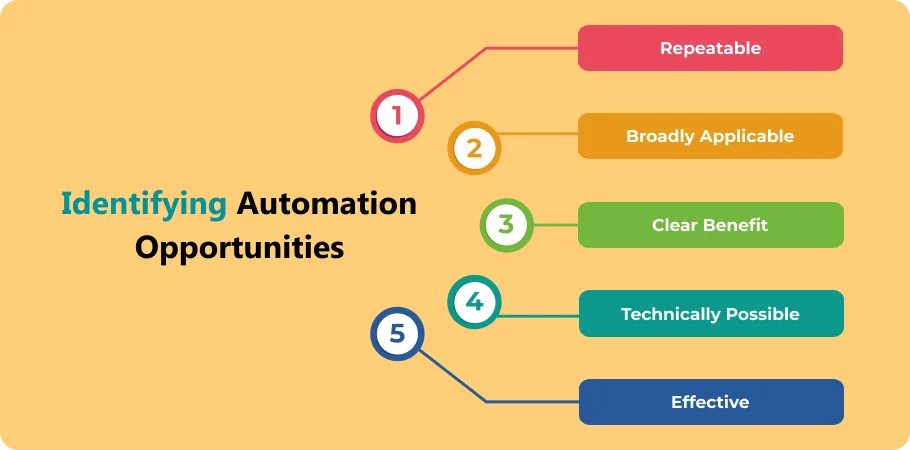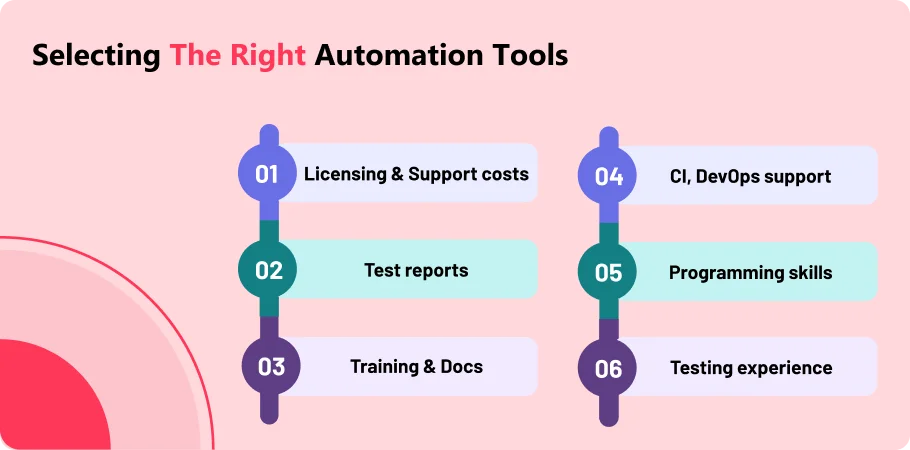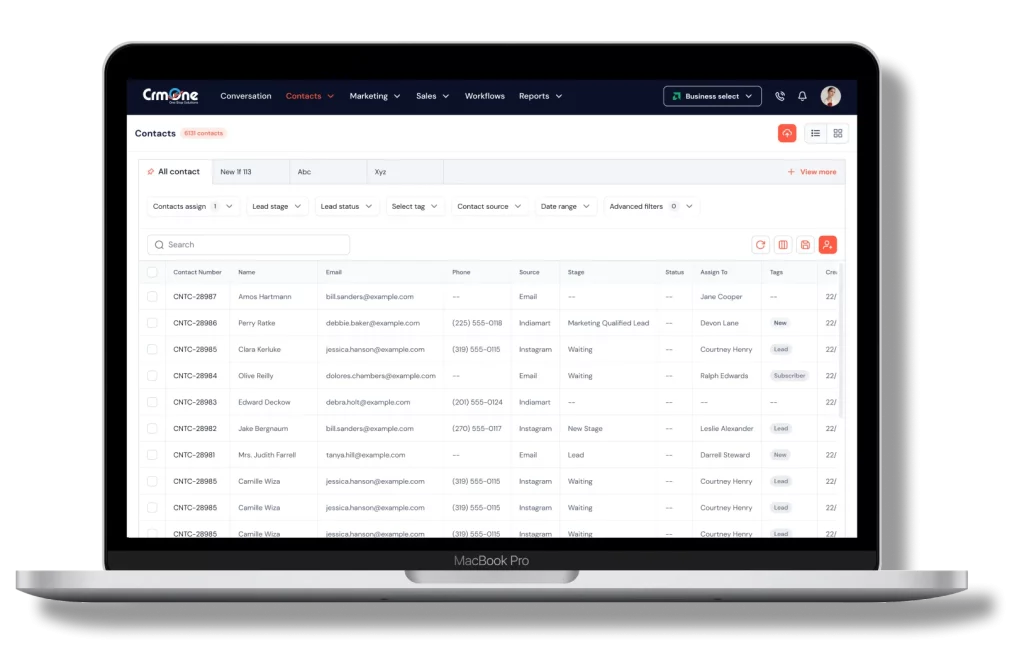Today’s businesses aim to work faster, make fewer mistakes, and run smoother. Process workflow automation is a robust solution gaining recent attention. This guide assists in making work easier and quicker through workflow automation systems.
Automated workflows streamline tasks, saving businesses time and money. They make work easier by reducing manual efforts. This guide will look at workflow automation. It will also help you choose the right tools, streamline workflows, involve people, and maintain compliance and security. Businesses can boost their competitiveness in today’s market by using automation processes.
What is Workflow Automation?

Use technology to automate repetitive tasks and streamline business processes through automated workflows. Automated tasks aim to reduce manual work and boost efficiency within workflows. With workflow automation solutions, businesses enhance operations, save time, and allocate resources. Simplify business workflows, increase sales automation, and customize automation for unique needs. Additionally, using better workflow automation helps organizations become more efficient and productive. It ensures tasks are completed. Additionally, the strategic use of best workflow automation helps automate many tasks. This improves business processes and makes operations run smoother.
What is workflow automation software?

Workflow automation software simplifies manual tasks by handling repetitive tasks in business workflows. This enhances efficiency and streamlines operations. Replace manual labor with workflow automation to streamline operations for organizations. This frees up time for more critical tasks. Utilizing automate workflows improves business processes, minimizing errors and boosting efficiency.
Improved efficiency boosts customer satisfaction as workflows become smoother and more reliable. Process Workflow automation systems manage tasks in a structured way, ensuring consistency and accuracy. Organizations optimize resource use by reducing manual tasks and increasing automation, boosting productivity and performance.
Benefits of Workflow Automation

1. Efficiency
Workflow automation cuts down on manual tasks. This lets employees focus on more important work, boosting productivity.
2. Error Reduction
Automating repetitive tasks reduces human error. This leads to higher accuracy and better quality of work.
3. Cost Savings
By reducing manual tasks and improving workflows, businesses save on labor costs, cut expenses, and increase ROI.
4. Scalability
Automated workflows can adapt to changing business needs and more work, helping organizations grow without needing many more resources.
5. Enhanced Compliance
Workflow automation software helps follow regulations and company policies by standardizing processes. It ensures everyone follows the same rules and guidelines.
Practical Steps for Workflow Automation

1. Assessing Your Current Workflow
Before trying a workflow automation solution, check your current business processes. This means examining current tasks for slowdowns or inefficiencies. Then, find where a workflow automation solution can improve business processes. By checking your current workflow, you can see which physical tasks need a different approach and which can be automated.
You can check automated workflow tools to find problems and improve business efficiency. These tools reduce routine tasks and save time. You can also see which manual processes can be automated using existing workflows.
2. Identifying Automation Opportunities

After looking at your current workflow, focus on finding areas for automation workflow efforts. This means finding tasks and processes in your workflow that can be automated to improve efficiency and reduce manual work. Automating workflows like data entry and managing repetitive notifications are joint opportunities. They simplify human resources processes. Organizations can make workflows smooth by knowing these routine tasks. Because of this, one can get time for other activities or tasks.
Once you find these opportunities, start exploring workflow automation. Install custom workflows to fit your needs. These workflows automate repetitive tasks, cut errors, and ensure consistency. You are using workflow automation to achieve more goals with less manual work.
3. Selecting the Right Automation Tools

Choosing the right automation tools is crucial for moving from manual workflows to an automated system. Choices like workflow automation tools and software simplify operations and reduce repetitive manual procedures. These tools are essential for today’s business management and offer features for different aspects of workflow automation.
When choosing workflow automation tools, consider your needs. Focus on your workflow automation efforts. Some tools automate specific tasks, while others manage entire workflows. Assess your needs and do research. This helps you find the right automation tool for your business goals and workflow. Selecting the appropriate workflow automation tool improves processes and efficiency for organizations and enables them to adjust to an automated business environment.
4. Designing Automated Workflows

Designing workflows becomes easy once you have the right workflow automation software. The goal is to automate manual processes so business users can focus on high-value tasks instead of mundane activities. Start by mapping your current modern business management. Identify areas where automation can simplify operations. For example, you might automate the expense approval process or simplify managing paid campaigns. This reduces manual work and improves business operations.
When designing workflow automation work, ensure seamless integration with current systems and processes. This means setting clear triggers and actions in the workflow to ensure smooth transitions between tasks. Design workflows that match your workflow automation focus and business goals. This will boost efficiency, reduce errors, and maximize automation benefits.
Book a CrmOne Demo
Experience the CrmOne simplicity and power. Our experts will show you the best ways to use it and answer your questions in real time. See how CRMOne fits your needs.

5. Integrating Human Intervention

Even though automation is powerful, there are moments where human intervention remains essential. Balancing automation and human involvement is critical to improving efficiency and productivity. Workflow automation supports streamline processes and automate tasks. Some business tasks still benefit from workflow automation. These include handling exceptions and making complex decisions. Tasks needing personal interaction with customers are also important. Human judgment and empathy are essential here.
To maximize efficiency and productivity, organizations should identify where process automation excels and where human input adds the most value. By automating basic tasks and repetitive processes, businesses can free up time for employees. This lets them focus on more critical, creative work and process efficiency. Striking the right balance between automation and human intervention is vital. This helps organizations use both technology and human abilities.
6. Testing and Iterating

After setting up your workflows, test them. Start by identifying multiple tasks and manual data entry automated in your business process. Test each step of the automated workflow to ensure that tasks are executed. Establish key performance indicators (KPIs) to measure process effectiveness. Look at time saved, error reduction, and increased productivity.
As you test your workflows, look for redundant tasks and areas where further automation could improve efficiency. Iterate the workflow design based on test results and user feedback. Refine and optimize the processes. Test and adjust your workflows. Ensure they align with your business goals and deliver the most value in efficiency and productivity.
7. Training and Adoption

To ensure successful workflow automation, train employees on the new automated processes. Provide comprehensive training on the automated workflow. Cover assigning tasks, understanding business rules, and navigating workflow systems. Equip employees with the skills and knowledge they need. This helps foster adoption and ensures everyone understands how automated procedures improve efficiency.
Organizations should demonstrate the benefits of automated procedures in real-world scenarios. This helps foster adoption throughout the organization. Encourage employees to use the new system and provide ongoing support. This helps overcome resistance and ensures that entire business processes, including complex workflows, are part of daily operations. Promote a culture of continuous learning and improvement. This maximizes the value of automated procedures and drives positive outcomes.
8. Monitoring and Optimization
Workflow automation is an ongoing process that needs continuous monitoring and optimization for maximum efficiency. Organizations should track automated procedures’ performance, analyze metrics, and identify areas for improvement. They should also examine workflow automation use cases and test how well they align with business rules and objectives. They should track cycle time, error rates, and task completion times. This helps identify ways to streamline processes and improve process efficiency.
Organizations should optimize workflows automated by updating workflow templates. They should also eliminate outdated or redundant tasks. Use business workflow and robotic process automation to automate repetitive notifications and streamline Complicated workflows. Organizations can stay agile and adapt to changes by using workflow automation. Simplifying processes and following best practices helps them do this effectively. This maximizes the benefits of automation.
9. Compliance and Security Considerations
In healthcare and finance, it’s essential to ensure compliance and security in automated workflows. First, Organizations should identify repetitive tasks that are human errors. We should also include automating workflows to avoid these errors.
We should include workflow automation software in human resources areas. By automating repetitive notifications, we can optimize business tasks and reduce the risk gap during the process.
Companies need strong security measures to safeguard sensitive data in automated procedures. This means using encryption, limiting access, and checking to follow rules and stop unauthorized access. sales workflow automation emphasizes regulations and security, which helps organizations reduce risks and maintain trust with clients and regulators.
10. Future Trends in Workflow Automation Process

RPA, i.e., robotic process automation, and IPA are new trends in workflow automation that will influence the future. These technologies aim to streamline and enhance the efficiency of automated procedures. Using RPA, organizations can automate multiple tasks by imitating how humans work with digital systems. IPA goes even further by adding brainpower to deal with complicated processes.
As automation improves, the main aim is to use technology to automate workflows without any bumps. We are moving ahead in the competition of automating tasks by including RPA and IPA with the current system. These can change and adjust as businesses need them to. These advancements in workflow automation will change how businesses work in the future. They’ll help make things run smoother, get more done, and develop new ideas.
What Are Examples of Workflow Automation?

There are three workflow automation examples.
1. Business Process Automation Workflow
Business process automation (BPA) means using technology to do tasks that we usually do by hand, over and over again, in a business. This helps us work faster and get more done. In a BPA workflow, we use workflow automation software to type in data, approve documents, and give out tasks. This helps us get these jobs done faster and with less effort. For example, employees can send their expense reports online when they need their expenses approved. Then, the reports are sent straight to their managers for approval without anyone having to do it. Once the costs are approved, the system starts the reimbursement process. This reduces the amount of manual work needed and makes the whole procedure smoother. Workflow automation software helps organizations automate workflows. This reduces mistakes, saves time, and boosts productivity.
2. Customer Relationship Automation Workflows
Customer relationship automation automates interactions and processes related to customer relationship management (CRM). We use automated systems to help us find potential customers, get them started with our service, and stay in touch with them afterward. This makes our customers happier and more likely to stick around. For example, when we talk about automated workflow examples, it’s like setting up automatic email chains. These emails can say hello to new customers, suggest products they might like, and ask them what they think about our service. Automation software is like a magic tool for businesses. It helps them do things without needing a human to do them individually. For example, it can put tasks in the correct order. This improves the experience for customers, gets them more involved, and helps businesses make friends for the long haul.
3. IT Automation Workflows
IT automation workflows automate tasks and processes in the IT department to boost efficiency and Reduce errors. These workflows include setting up servers, deploying software, and monitoring systems.
Software deployment process
Automated workflow tools package and deploy software updates across many servers or devices, reducing deployment time and fewer errors. Aid in streamlining operations for IT teams. It Enhances scalability and Ensures consistent performance across IT infrastructure.
Conclusion
Automating workflows with tools like CrmOne can really help. It makes things smoother, reduces errors, and helps businesses grow. This blog helps in the understanding of workflows, picking tools as well as designing, and training that make sure about security. It’s a comprehensive resource for implementing workflow automation. We will know about future trends by following the above steps. Workflow automation, businesses can enhance operations, improve productivity, and achieve long-term success.
Get started for Free
Start for free today. Boost your sales by clicking the Get Started button. With CRMOne, you can manage leads, sales, and customer service all in one place.

